Where the Dinosaurs Roamed—Mexico's Chicxulub Crater Was Site of Asteroid Impact
The fifth mass extinction
“How bright and beautiful an asteroid is as it flies past our world—provided it does fly past it.” Isaac Asimov
Dinosaurs ruled the world for 170 million years during the Cretaceous Period, a time when oceans formed as land shifted and broke out of one big supercontinent into smaller ones. The bad boy that caused it? An asteroid hurtling towards planet Earth after its misguided journey around the sun.
When that asteroid collided with Earth, a cataclysmic event known as the fifth extinction occurred, wiping out roughly 80 percent of all animal species, including those dinosaurs.
Hidden below the waters of the Gulf of Mexico, the Chicxulub Crater marks the impact site where the asteroid struck our planet 66 million years ago.
“The asteroid was moving astonishingly quickly,” according to Professor Gareth Collings of Planetary Science at Imperial College in London. “Probably around 12.5 miles per second when it struck. That’s about 100 times the speed of a jumbo jet.”
Size matters
By studying both Chicxulub and worldwide geology, scientists have pieced together what happened that fateful day and in the years following when an asteroid larger than the height Mount Everest reaches into the atmosphere slammed into Earth.
It unleashed the equivalent energy of billions of nuclear weapons all at once. It vaporized the Gulf of Mexico. Bedrock melted into seething white flames at tens of thousands of degrees Celsius, and it created a hole 12 miles deep and nearly 120 miles wide.
The crater is a fairly recent discovery, first identified in 1978 by geophysicist Glen Penfield who worked for Pemex, Mexico's state-owned oil agency. While searching for oil, his crew used a magnetometer as they flew above the Gulf. That's when Penfield saw the outline of a perfect semi-circle in the clear water below, where the ground had been vaporized in a split second by the impact.
The device indicated to Penfield and fellow geo-physicist Antonio Camargo Zanoguera that an unusual magnetic field existed there—one different from volcanic terrain. The saucer shaped underground structure was ten times the size of any volcano. The two men agreed, according to Smithsonian Magazine, that it could not be the result of a volcano and was probably the result from an impact crater.
Species collapse
Due to the impact, it would take 30,000 years for life to stabilize. Earth's water supplies were poisoned and 80 percent of species vanished. The 20 percent that survived were pushed to the brink of extinction and anything larger than a raccoon perished.
After Penfield's initial fly-over, Luis Alvarez, Berkeley Lab physicist, and son Walter, UC Berkeley geologist, discovered a thin layer of iridium across the entire world in a geological record marking the ending of the Cretaceous Period. Iridium is more prevalent in comets and asteroids than on Earth.
The scientist team theorized the impact led to global fires, smoke, and dust clouds that blocked out the sun, cooling the planet and preventing photosynthesis. They hypothesized that the crater might be the Cretaceous-Tertiary Mass Extinction event, later known as the K-T impact site.
More scientists clock in
Soon after that, Allen Hildebrand, Ph.D. in Planetary Sciences from University of Arizona, worked with the Alvarez team. They published what were considered controversial articles, suggesting that an impact from a large asteroid caused the mass extinction at the end of the Cretaceous Period. In time, Chicxulub was accepted as the site, after over 2000 briefs were published by numerous scientists. In 2010 an international panel of experts ruled in favor of the theory proposed in 1980 by father and son Alvarez team, and it became widely known as the K-T event.
In 1990, a planetary scientist from NASA, Adriana Ocampo, was using satellite images to map water resources in the Yucatán Peninsula. Along with her former husband, Dr. Kevin Pope, they discovered a semi-circular ring of cenotes, also known as sinkholes, that she recognized as being related to the crater.
They too hypothesized the crater might be the K-T event site, as had the Alvarez team, and published their findings in the journal Nature in 1991.
Ocampo has visited the Yucatán Peninsula numerous times since her discoveries, but only a very few were aware of the importance of the place, she stated in an interview in Yucatán Magazine.
When asked by NASA magazine what her most memorable moment in her career was, she answered it was doing her research that led to the discovery of the Chicxulub impact crater.
“I wrote my master's and Ph.D. theses on this crater and I have led six research expeditions to study this event that changed the evolution of life on our planet,” she said.
World heritage site?
"It should be preserved as a world heritage site," she continued. Though not yet world heritage-worthy, the Chicxulub Crater Science Museum south of Progreso is a stunning nod to the asteroid that literally shook our world 66 million years ago. The asteroid created a new pecking order by destroying the dinosaurs.
As a young scientist, Ocampo studied with legendary pioneering astro-geologist Eugene Shoemaker. She began connecting the dots back on the crater in 1988 when she attended a scientific conference in Acapulco. She gives Houston Chronicle journalist Carlos Byars credit as the first person to connect the Yucatán ring to the Alvarez father-son asteroid theory.
Byars shared his theory with Alan Hildebrand, she explained, who then approached Penfield who had flown over the Gulf for Pemex Oil in 1978. The two scientists determined the crater wasn't a volcano but an asteroid impact.
Laidback spot
Chicxulub Puerto and Chicxulub Pueblo, the nearest pueblos, are laid back communities made famous because of the epicenter of the asteroid impact. But even the Crater Science Museum, part of the research complex of Yucatán Science and Technology, is miles away from the towns.
The park, inaugurated in the past couple years, was closed during the pandemic. On what’s now called the Jurassic Trail, it’s gained steam on social media and is growing in popularity.
The museum welcomes one to the world of yesteryear. Through its exhibits it shows how humans emerged at the top of the food chain after the asteroid exterminated the dinosaurs.
With no competition, here we are. So—loaded question—how are we doing?
And if you’re interested in supporting independent journalism and writing, please consider a paid subscription to Mexico Soul. It would mean the world to me and will keep you up to date on all my posts and chapters from Where the Sky is Born, detailing how we bought land and built a house in a small fishing village on the Mexico Caribbean coast. Not to mention a bookstore, too! All for $5/monthly or $50 per year.
Backstory—Puerto Morelos sits within 100 miles of four major pyramid sites: Chichen Itza, Coba, Tulum and Ek Balam. By living in close proximity to this Maya wonderland we pyramid hopped on our days off from Alma Libre Libros, the bookstore we founded in 1997. Owning a bookstore made it easy to order every possible book I could find on the Maya and their culture, the pyramids, the archeologists who dug at these sites and the scholars who wrote about them, not to mention meeting archeologists, tour guides, and local Maya who popped into the store. I became a self-taught Mayaphile and eventually website publishers, Mexican newspapers and magazines, even guidebooks asked me to write for them about the Maya and Mexico. I’ll never stop being enthralled by the culture and history and glad there’s always new news emerging for me to report on right here in Mexico Soul. Please share this post if you know others interested in the Maya. Thank you!

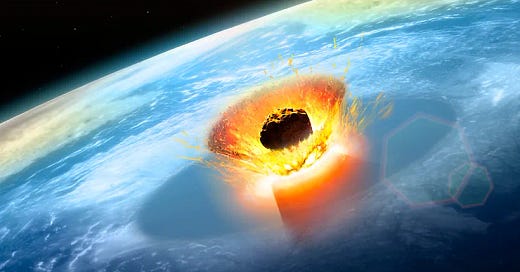



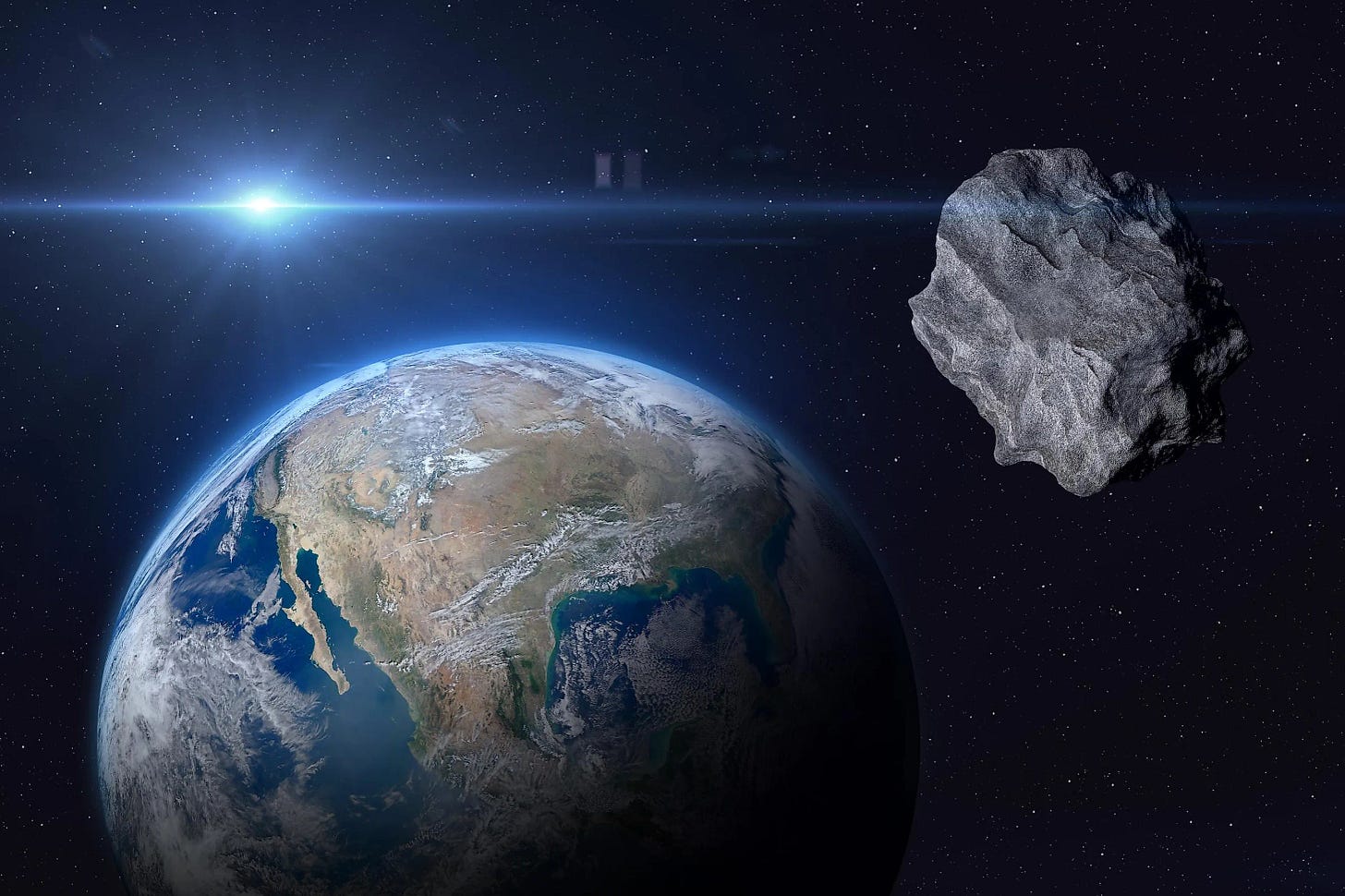
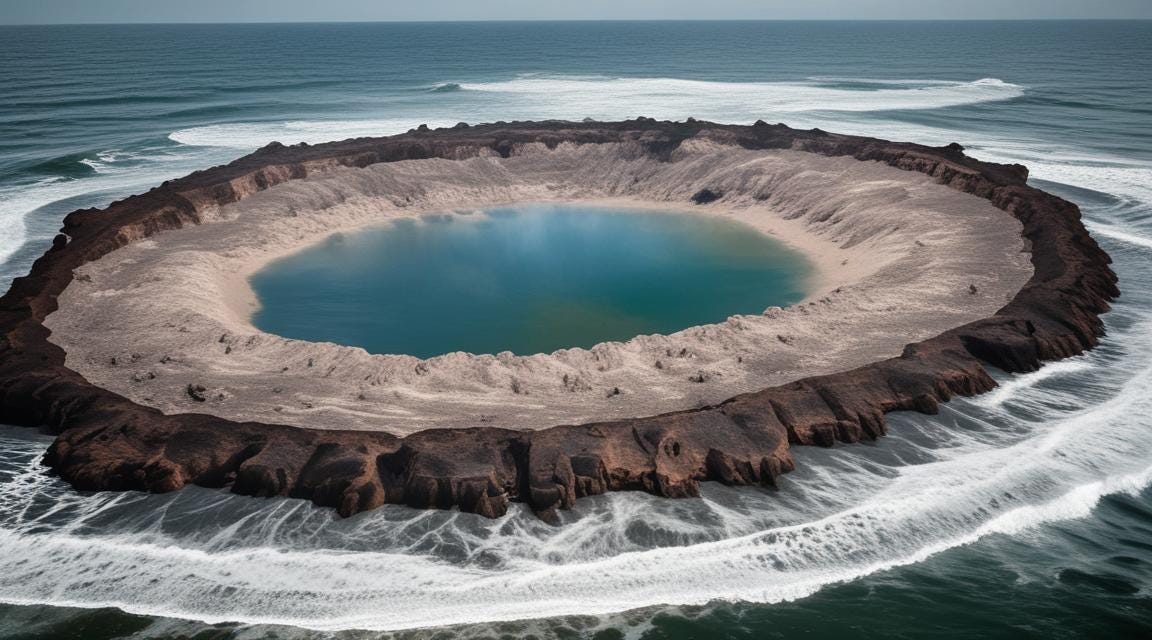

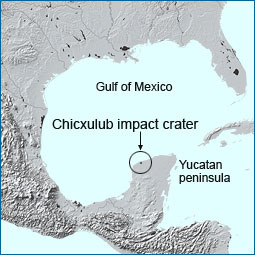
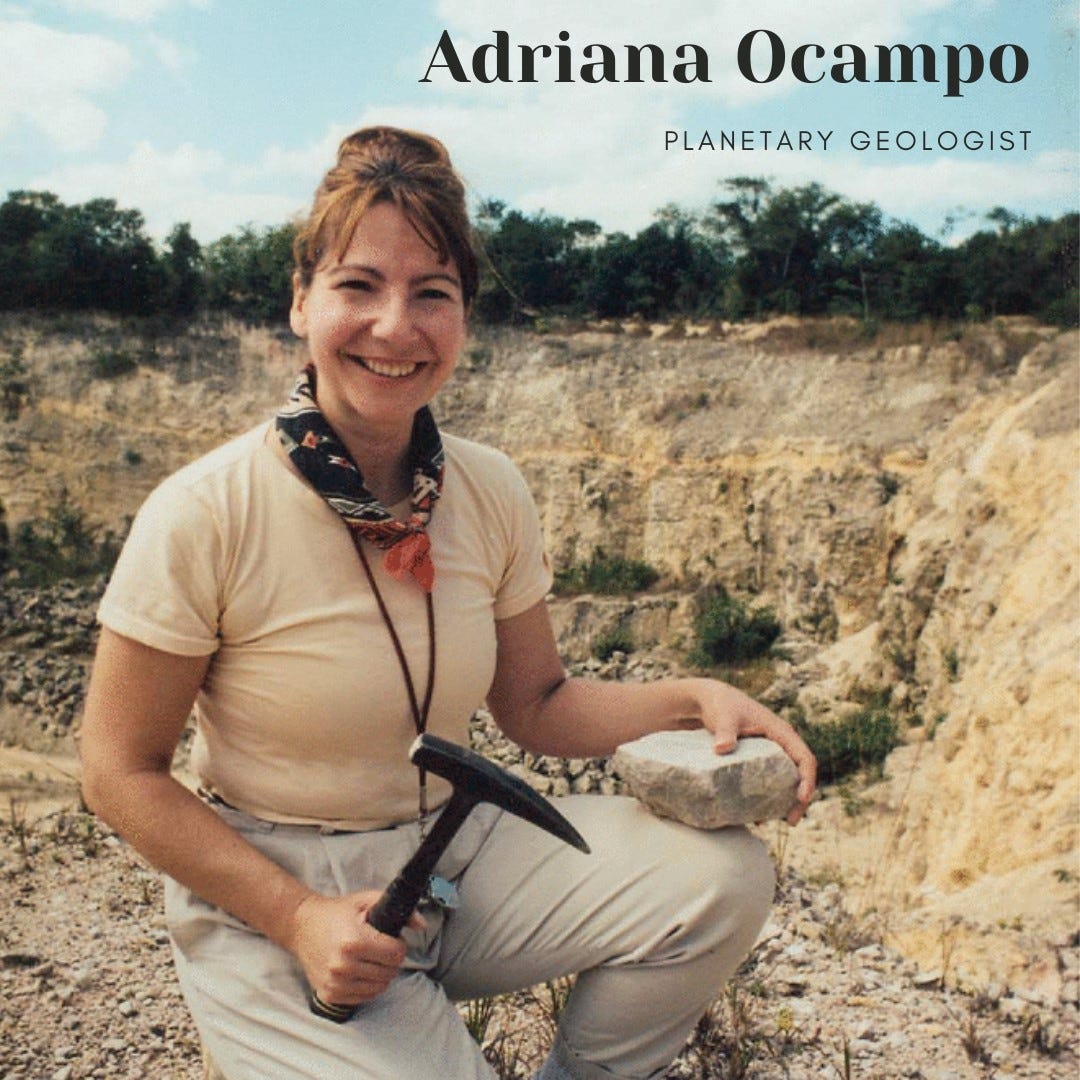
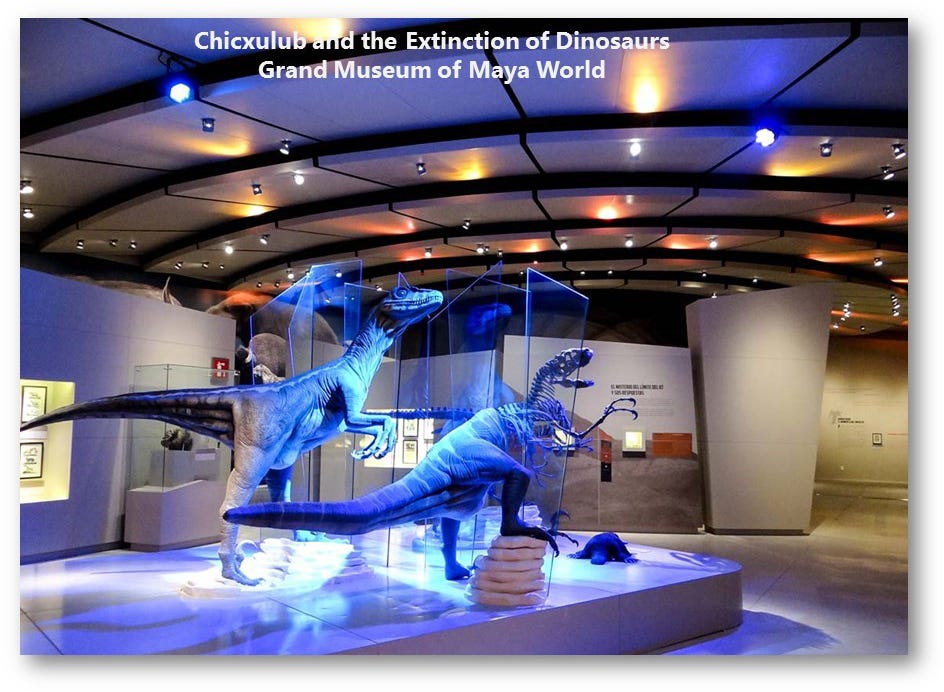
Thank you for writing about this. I lived in Chixculub, two blocks from the beach for about 9 months. People hardly seemed to know or bother about the crater....
A loaded question indeed. How are we doing? Humans, as the heirs in the line of succession from dinosaurs to top dogs have managed to—not at 12 miles per second speed – but at a much slower speed, wreak havoc on our entire planet. T Rex-ing around, causing the temps to rise, oceans to heat up to a point that marine life can no longer survive, ice melting leaving polar bears to cling to tiny floes, fires the world over caused by climate change consuming trees that give us oxygen and destroying millions of animals. I could go on. Human legacy is burned into the whole planet-- we leave a “crater” too and not with just one violent yet benign act by an accidental meteor strike. We know better. Shame on us.